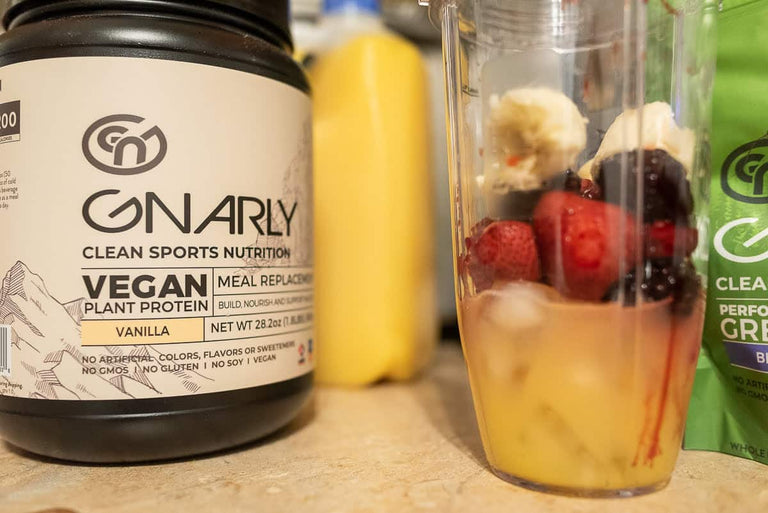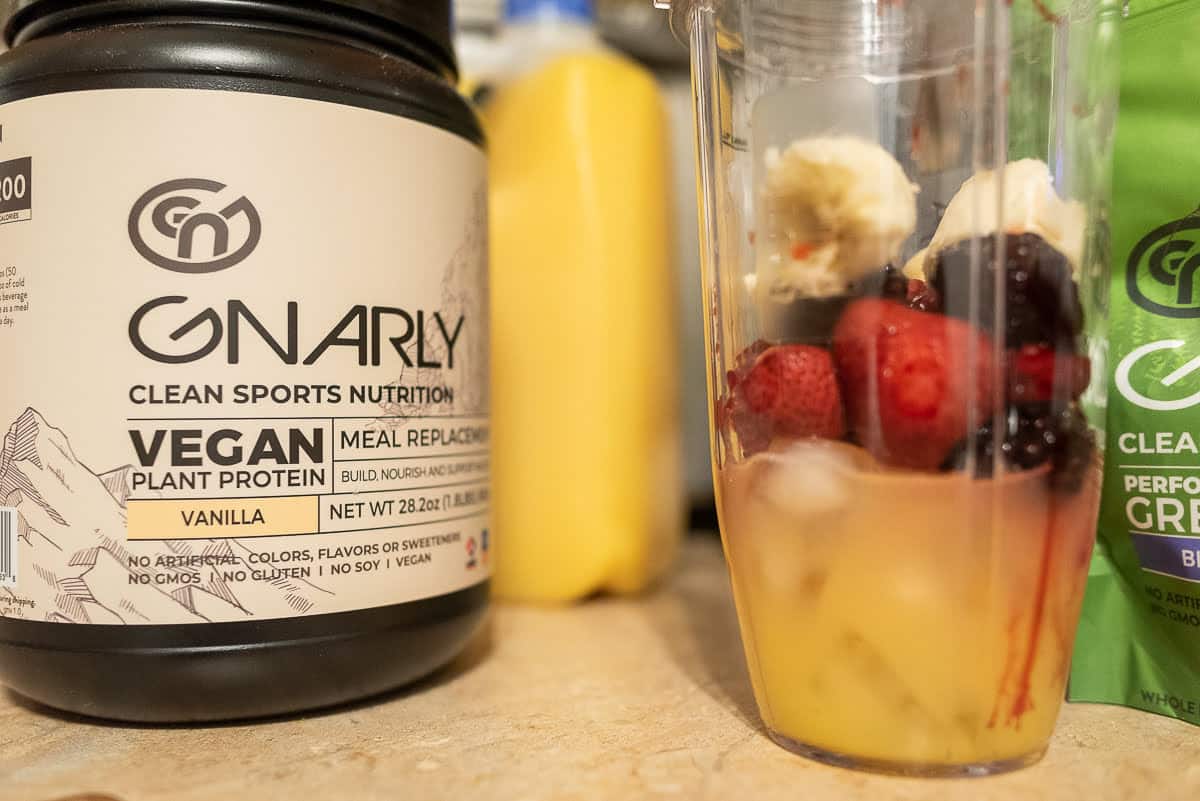Juice and smoothie detoxes have become a quick fix tool for delivering a boost of vitamins and minerals in a simple drink. Juice products range from single-serving options to multi-day juice cleanses, whereby juices are the only food source consumed for several days.
Juicing and cleanses get a lot of hype because of the reported health benefits, including claims of weight loss and the reversal and prevention of diseases.1 Juices have also been used for detoxification. Although these juices provide a way to increase daily intake of vitamins, minerals and antioxidants, the process of juicing removes fibers that are largely important for bowel movement regularity, blood glucose regulation and gut health. Additionally, juicing of oxalate-rich vegetables and fruits has been shown to cause calcium crystal deposits in the kidneys (oxalate nephropathy) in several cases when consumed in excess, which can lead to renal failure.2 For this reason, the juicing industry and its proponents have received criticism over health claims. It’s easy for us to become caught up in the allure of juicing, but the current evidence does not support the industry’s claims.
For those of us looking for a quick fix to cleanse and detox our bodies, juicing sounds like a simple strategy. Our lives are busy, so it’s tempting to commit to a drink-based detox protocol that promises to reduce our bloating and constipation, help aid in weight loss and rid our bodies of unwanted junk. But detoxification is much more complex and requires specific nutrients to function.
The Science: Detoxification pathways
Understanding the process of detoxification in the body helps us know why juice cleanses and detoxes don’t live up to the hype. Detoxification is a multi-step process that occurs in response to numerous external and internal factors, and it’s an essential body process that helps reduce toxic load. The primary function of detoxification is to transform toxic compounds (e.g. environmental toxins, hormones, inflammatory compounds) so that they may be excreted via the kidneys, lungs, skin and colon. Detoxification is highly influenced by diet, lifestyle, age, gender, environment, genetics, medications and disease. The process involves three phases: Phase I, II and III. Phase 0 is when a toxic compound enters the cell.
Phase I of detoxification is the biotransformation step. Biotransformation is the process by which the liver transforms toxic substances by tagging them so they can be excreted from the body or enter Phase II of detoxification. Nutrients are required for Phase I to occur, which include vitamins B2 (riboflavin), B3 (niacin), B6, B9 (folic acid) and B12, along with glutathione, flavonoids, branched-chain amino acids (BCAAs) and phospholipids. Compounds that are transformed may be more reactive than when they entered Phase I. Additionally, reactive oxygen species (ROS) and free radicals are produced during this step.
The addition of antioxidants in the diet, such as vitamins C and E, tocopherols and carotenoids, help neutralize the reactive species produced. ROS are important for cell signaling, but in excess, they can damage lipids, proteins and DNA. At the end of Phase I, intermediate metabolites are either excreted, or begin Phase II of detoxification.
Phase II is the conjugation, or “joining together,” step in detoxification. The function of Phase II is to take intermediate metabolites from Phase I and make them harmless compounds that are easy to excrete. Like Phase I, nutrients are required from the diet in order for the phase to occur, which include amino acids glutamine, glycine, N-acetylcysteine, taurine and methionine.

These nutrients are consumed via a diet that is diverse and full of colorful fruits and vegetables and both animal and plant-based protein sources. Sulfur-containing foods, such as broccoli, cauliflower and cabbage, are especially potent sources of Phase II amino acids. Phase II is considered the final pathway before excretion in detoxification, and is therefore important to maintain.
In Phase IIIcompounds are excreted via sweat, urine and feces. Other pathways for excretion include the hair and saliva. This final step is harmed if normal bodily functioning is dysfunctional. For example, a sedentary person who does not sweat, eats a low-fiber diet, drinks little water and experiences constipation is likely to have reduced excretion, thus allowing compounds to be reabsorbed in the body.
Detoxification is not a simple process. It is a complex, nutrient-requiring, multi-phase pathway to safeguard our bodies against damage. Although juice cleanses deliver some of the nutrients needed for detoxification, they fail to provide all of the necessary requirements for each phase to function. For example, methionine is plentiful in eggs, meat, dairy, seeds and grains, but is very low in most fruits and vegetables. By removing whole foods, we also reduce fiber, which is an integral part of elimination. Because of this, juice cleanses fall short in delivering detoxification.
Who might need detox support?
Detoxification occurs whether or not we take part in a juice cleanse. However, consuming specific nutrients supports proper detoxification. Although this process occurs without a dedicated cleanse period, some people would benefit from a nutrition-supported detox to enrich and stimulate normal functioning.
Detox support may be needed if you:
- Have hormone imbalances
- Have gut dysbiosis or gut-related disorders
- Take multiple medications or drugs
- Have a chronic disease
- Drink alcohol excessively
- Experience frequent exposure to environmental toxins (city living, proximity to roadways, living conditions, personal care products, food storage containers)
- Experience high stress, anxiety and a poor home life or relationships
- Consume a poor diet devoid of fruits, vegetables and adequate calories
An alternative approach to juice cleanses for the purpose of detoxification
Eating a nourishing, well-balanced diet is the best approach for stimulating and maintaining detoxification.
One of the best dietary strategies is adopting a Mediterranean-style diet that incorporates fresh fruits and vegetables of a variety of colors, healthy fats (from fatty fish, walnuts, oils), low-fat dairy products, lean proteins (both meat and plant-based) and whole grains. Eating a diverse diet ensures that both macro- and micronutrients are consumed in adequate quantities, which supports detoxification and overall health.
If you are looking for an edge with detoxification support, remember that it is possible to overdo a good thing. Supplementation with specific antioxidants, such as resveratrol and curcumin, may be helpful for short time periods, but in the long-term they can cause imbalances and actually worsen how your body heals from trauma, infections or injury. Bi-functional modulators, or food sources that stimulate and support both Phases I and II, include green tea, pomegranates and watercress.

For optimal detox function:
- Start with a well-balanced diet first and eat a variety of foods each day
- Wash fruits and vegetables thoroughly before consuming
- Avoid smoking, excessive alcohol consumption, and drug use
- Reduce coffee intake to <2 cups/day
- Drink adequate water (at least 8 cups) from an unchlorinated and filtered source
- Stay active (sweat is the best avenue for toxin excretion)
- Reduce stress and get outside when possible
final word
Although juice cleanses don’t live up to the hype of detoxing the body, there’s one advantage to consuming fruits and vegetables in liquid form. If this is the only way you can commit to consuming fruits and vegetables, perhaps it’s a worthy addition to your daily diet. After all, identifying sustainable approaches to eating healthfully is a meaningful win.
Detox-supporting smoothie recipe (2 servings)
- 2 cups unsweetened milk alternative or low-fat milk
- 1 cup frozen strawberries
- 1 cup frozen blueberries
- 2 scoops Gnarly Vegan or Whey protein powder
- 2 Tablespoons chia seeds
- 1 scoop Gnarly Performance Greens
Add all ingredients to a blender and blend until smooth.

works cited
- “Juicing — Fad or Fab?” (2015). Harvard Health Publishing: Harvard Medical School. https://www.health.harvard.edu/healthy-eating/juicing-fad-or-fab
- Getting JE, Gregoire JR, Phul A, Kasten MJ. (2013). Oxalate nephropathy due to ‘juicing’: case report and review. Am J Med. 126(9):768-72. doi: 10.1016/j.amjmed.2013.03.019.





